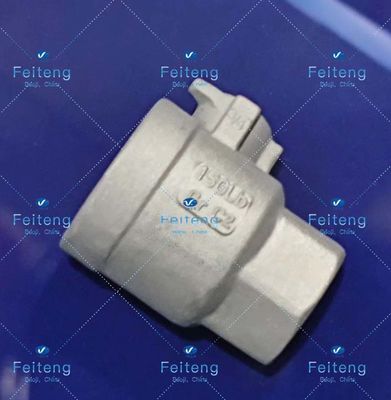Lightweight ASTM B367 Gr2 Ti Castings Heat Resistant
| Place of Origin | Baoji, Shaanxi, China |
|---|---|
| Brand Name | Feiteng |
| Certification | GB/T19001-2016 idt ISO9001:2015 GJB9001C-2017 |
| Model Number | Titanium Casting |
| Minimum Order Quantity | To be negotiated |
| Price | To be negotiated |
| Packaging Details | Wooden case |
| Delivery Time | To be negotiated |
| Payment Terms | T/T |
| Supply Ability | To be negotiated |

Contact me for free samples and coupons.
Whatsapp:0086 18588475571
Wechat: 0086 18588475571
Skype: sales10@aixton.com
If you have any concern, we provide 24-hour online help.
x| Brand Name | Feiteng | Model Number | Titanium Casting |
|---|---|---|---|
| Certification | GB/T19001-2016 Idt ISO9001:2015 MANAGEMENT SYSTEM CNAS C034-M | Place Of Origin | Baoji, Shaanxi, China |
| Packaging | Wooden Case | ||
| Highlight | Gr2 Ti Castings Heat Resistant,ASTM B367 Ti Castings,Lightweight ASTM Titanium Casting |
||
Titanium Casting ASTM B367 Gr2 Titanium Castings Titanium MateriaI
| Name | Titanium Casting |
| Grade | Gr2 |
| Material | Titanium |
| Standard | ASTM B367 |
| Packaging | Wooden case |
| Delivery |
Xi'an port, Beijing port, Shanghai port, Guangzhou port, Shenzhen port |
Titanium is a widely used metal, due to its light weight, higher strength than aluminum alloy, can maintain a higher strength than aluminum at high temperature and is highly valued by the aviation industry. Titanium has a wide range of uses in the military industry. At room temperature, the chemical activity of titanium is very small and can react with a few substances such as hydrofluoric acid, but when the temperature increases, the activity of titanium increases rapidly, especially at high temperature, titanium can react violently with many substances. The good mechanical properties of titanium as a structural material are achieved by strictly controlling the appropriate impurity content and adding alloying elements.
There are many classification methods for castings: according to the different metal materials used, they are divided into steel castings, iron castings, copper castings, aluminum castings, magnesium castings, zinc castings, titanium castings, etc. Each type of casting can be further divided into different types according to its chemical composition or metallographic structure. For example, iron castings can be divided into gray iron castings, nodular iron castings, vermicular iron castings, malleable iron castings, alloy iron castings, etc.; According to different mold forming methods, castings can be divided into ordinary sand castings, metal castings, die castings, centrifugal castings, continuous castings, investment castings, ceramic castings, electroslag remelting castings, bimetallic castings, etc. Among them, ordinary sand castings are the most widely used, accounting for about 80% of the total casting output. Aluminum, magnesium, zinc and other non-ferrous metal castings are mostly die castings.
Features
1. Low Density and High Specification Strength
2. Excellent Corrosion Resistance
3. Good Resistance to Effect of Heat
4. Excellent Bearing to Cryogenics Property





